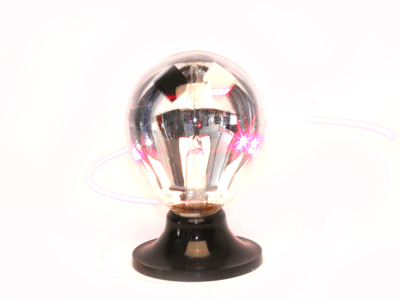Cosmic Ray Detector
By Bryan Bergeron
For example, I recently had to turn down an article that described how to build a "cosmic ray detector." The author was an exceptional writer and builder, but he couldn't back up his assertion that the device he described actually detected cosmic rays. In fact, he couldn't specify the type of cosmic rays his device was designed to detect.
It apparently detected something, but it could have been static electricity just as well as gamma or beta radiation from the cosmos or from radon gas. Unfortunately, the author didn't have a standard radiation source or radiation detector at his disposal, and so there was no way to verify what — if anything — was being detected.
Although the article didn't make the pages of Nuts & Volts, I hope that the author continues his investigation. Many notable inventions and discoveries come about without a solid or even incorrect scientific backing, and often with no homage paid to the scientific method. Take the Crookes radiometer as an example.
As you may be able to see in the photo of my radiometer, the device consists of four vanes — each of which has one blackened side and one white side. It is encased in a clear glass bulb that has a near perfect vacuum. Crookes believed — incorrectly — that light falling on the device turned the vanes so that the black surfaces were pushed away by the light.
The problem with Crookes' logic is that light falling on the black side should be absorbed, while light falling on the white side should be reflected. Meaning the white side should be pushed away by the light. It turns out that the radiometer only works in a near vacuum, which supports the current theory that the movement is the result of gasses passing over the edges of the vanes. In a perfect vacuum, the radiometer doesn't operate.

Crookes’ radiometer remains a curiosity that's popular with the science crowd, but as a detector it has been supplanted by quantitative, calibrated instruments.
The point is that it's possible for someone to create a device that's operational and yet operates on principles unknown to the inventor. With this in mind, I had waves of second thoughts about the author's cosmic ray detector. However, lacking any evidence supporting the claim that the signals being detected were — in fact — of cosmic origin, I was forced to place the article in the rejected pile.
By chance, I set the article aside just before the discovery of the long-awaited Higgs Boson. The particle was verified nearly 50 years after its existence was postulated, using multi-million dollar advanced instruments run by teams of scientists.
I suppose I'll never know whether the 'cosmic ray detector' (constructed with perhaps $50 in parts) could have detected the Higgs Boson.
I hope, however, the experimenter who was temporarily turned away continues with his experiments. Sometimes it takes science a while to catch up with what experimentalists develop by intuition, sweat, and most of all, persistence. NV
Comments

